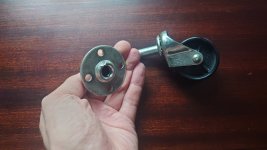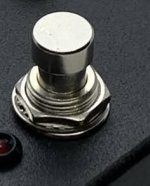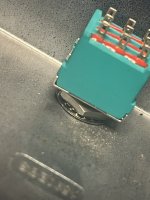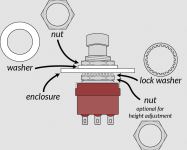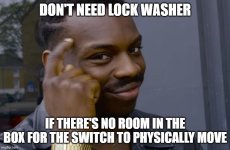So… SMD layouts/components
I’ve searched and more or less want to confirm what i’ve found across several sources on the interwebs.
Film caps mostly become C0G MLCC caps? except for higher values some prefer through hole films? Package size 805?
Thick film resistors? Package size 603 or 805?
Kemet, muRata, TDK?
I’m just looking for general rules. I am no engineer or mathematician but i like to try to make sure things are done right.
This has been my general approach but #IHaveNoIdeaWhatI'mDoingDog.
C0G/NP0 caps for anything in the audio path, X7R/X5R for IC decoupling/power filtering caps. Mostly muRata
which is generally available on LCSC/JLC for the C0G caps. In terms of physical size, you're limited by what's
offered. Smaller (pF) come in 0603, low/mid nF in 0805, and the larger ones (47/100/220nF) only come in 1206.
If you're using JLC, pay special attention to 'Basic' and 'Extended' components, you'll want to use as
few *different* extended components as possible, because each different one adds $3 setup to the PCBA cost.
The caps might be 0.015, but it costs $3.015 to put the first one on a batch of boards.
Some values come in multiple footprints but one might be Basic and the other Extended. (e.g. there are
some pF size caps that are basic in 0603 but extended in 0805).
Often I'll do extended component golf and use 2x47nF in parallel instead of a 100nF because I already
have 100nF caps elsewhere, or even like 10nf + 10nf + 2.2nf for a 22nf cap. When you're only making
10 boards at a time, the startup costs end up being a significant part of the whole, so if you can replace
an extended part with less than 30 cents worth of other components (for 10 boards) it's worth it if you
have the space in the layout. Obviously the more boards you order at a time, the less the setup-cost-per-board
is, so you don't need to worry as much. After 50 boards you have to pay $3/component type anyway.
This can also be a decider for me whether or not to use a box style film cap. You can get up to 220nF
generally-available in C0G but sometimes if I only need a value once or twice and there's room I'll slap
a box cap on there and call it good. Also anything larger than 220nF I'll use the box cap. For the most
part I leave those unpopulated via PCBA and hand solder them at home, although I do have them solder
other through-hole components like connectors and trimpots.
For resistors I've been using the 'Basic' 0603 size (Uni-Royal brand).
Also one thing that's nice is that there are 'Basic' versions of quite a few op-amps (TL072, LM386, NE5532)
for ~10 cents so sometimes if routing both halves of a dual op-amp are painful you can just say screw it
and drop another one in. (Or if you're worried about LFO noise, or you want to get an extra half to drive
an input buffer or vref or something)
All of this sounds fine to me but I'm a half-deaf old man that wouldn't know tone if it shouted me in the face.
I guess I should write a "Getting started with JLC PCBA post" if that doesn't already exist!


